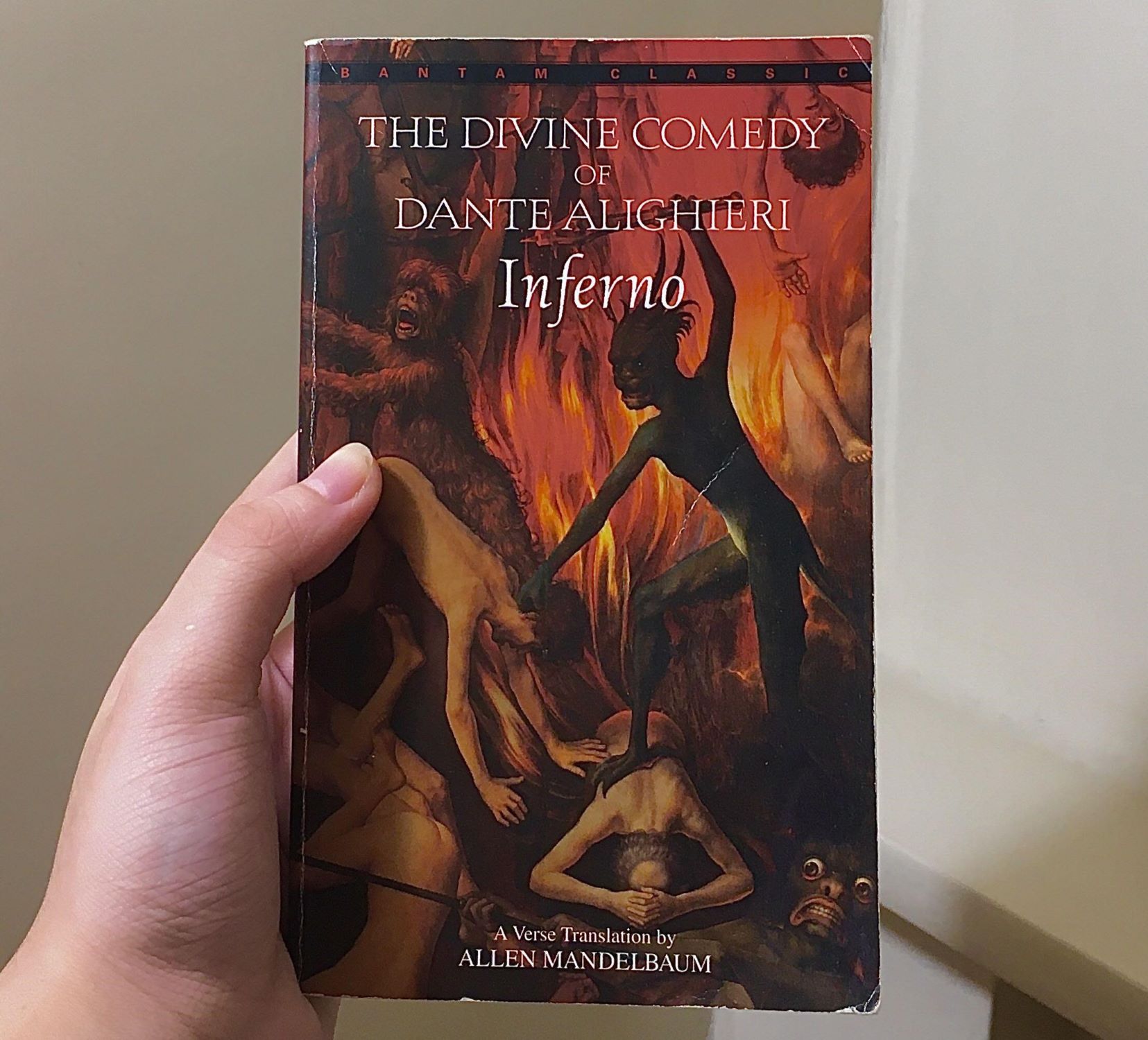
Dante Alighieri’s Inferno is one of the most captivating and enigmatic works in literary history. This epic poem, part of his Divine Comedy, takes readers on a thrilling journey through the nine circles of hell. But beyond the surface of this renowned masterpiece lie countless intriguing facts that bring the work to life in even more incredible ways. From the inspiration behind the characters to the profound symbolism woven throughout the narrative, exploring the secrets behind Inferno is like embarking on a quest through the depths of the human psyche. In this article, we will uncover 15 unbelievable facts about Inferno that will leave you in awe of Dante’s genius and the enduring impact of his literary masterpiece.
Key Takeaways:
- Dante Alighieri’s “Inferno” is a timeless masterpiece that explores the consequences of sin and the possibility of redemption through vivid imagery and profound themes.
- “Inferno” has left a lasting impact on art, literature, and philosophical discourse, inspiring countless adaptations and sparking discussions about morality and human nature.
Dante Alighieri was the author of “Inferno”.
Considered one of the greatest literary works of all time, “Inferno” was written by Dante Alighieri, an Italian poet who lived in the 14th century.
“Inferno” is the first part of an epic poem called “The Divine Comedy”.
The Divine Comedy consists of three parts: Inferno, Purgatorio, and Paradiso. Dante’s journey through Hell, depicted in Inferno, is the most widely known and studied section of the epic.
Inferno is written in terza rima, a unique poetic form invented by Dante himself.
This form consists of three-line stanzas, with a specific rhyme scheme of aba, bcb, cdc, and so on. This intricate structure adds to the complexity and beauty of the poem.
The poem is divided into nine circles of Hell.
Each circle represents a different sin and its corresponding punishment. The deeper Dante travels into the circles, the more severe the sins and punishments become.
Dante encounters various historical and mythological figures in Inferno.
Throughout his journey, Dante converses with notable characters such as Virgil, the Roman poet who guides him through Hell, and encounters famous historical figures like Julius Caesar and Cleopatra.
The punishments in Inferno are incredibly vivid and imaginative.
From being buried in burning sand to being transformed into twisted tree-like creatures, the torments inflicted upon the sinners in Inferno are designed to fit the nature of their sins.
Dante’s Inferno has had a significant influence on art and literature.
The vivid descriptions and symbolism in Inferno have inspired countless artists, writers, and filmmakers throughout history. It has become a source of inspiration for works ranging from paintings to video games.
There are multiple translations of Dante’s Inferno.
Due to the complexity and nuances of Dante’s language, many different translations of Inferno exist. This allows readers from different countries and time periods to experience the power of the poem.
Inferno explores themes of punishment and redemption.
Dante’s journey through Hell serves as a moral exploration of sin, punishment, and the possibility of redemption. It raises profound questions about human nature and the consequences of our actions.
Inferno has had a lasting impact on the philosophical and theological discourse.
The exploration of moral choices and the consequences of those choices in Inferno has made the poem a subject of discussion in philosophy and theology, sparking debates on topics such as free will and divine justice.
“Abandon all hope, ye who enter here” is a famous quote from Inferno.
This chilling quote is engraved on the Gates of Hell in Dante’s Inferno and has become an enduring symbol of the terrifying journey that awaits sinners in Hell.
Inferno has been adapted into various forms of media.
From stage plays to animated films, Dante’s Inferno has been adapted into different artistic mediums, allowing audiences to experience the gripping narrative in new and innovative ways.
Many universities include Inferno in their literature curricula.
Dante’s Inferno is often studied in literature courses at universities around the world. Its complex allegorical structure and profound themes make it a valuable piece of literature to analyze and discuss.
Inferno serves as a cautionary tale about the consequences of sin.
Dante’s vivid depiction of Hell and its punishments serves as a reminder of the potential consequences of our actions. It urges readers to reflect on their own choices and strive for a virtuous life.
Inferno is an enduring work of art that continues to captivate readers centuries after its creation.
Whether it’s the powerful imagery, complex symbolism, or timeless themes, Dante’s Inferno continues to leave a lasting impression on anyone who embarks on the journey through Hell.
Conclusion
The epic poem “Inferno” by Dante Alighieri is a masterpiece that continues to captivate readers with its vivid imagery, profound symbolism, and timeless themes. The journey through the nine circles of Hell takes readers on a gripping exploration of sin, redemption, and the consequences of one’s actions.Dante Alighieri’s “Inferno” offers a unique glimpse into the medieval view of the afterlife while presenting moral lessons that resonate with readers even today. Whether it’s the punishments faced by different sinners or the intricate construction of Hell, the poem remains a compelling account of human nature and its potential for both good and evil.Through the vivid descriptions and encounters with various historical and mythological figures, “Inferno” offers a thought-provoking examination of the human condition. Dante’s exploration of the seven deadly sins serves as a reminder of the consequences of indulging in these vices and the importance of striving for virtuous living.Overall, “Inferno” is an unforgettable journey through the depths of Hell, providing readers with both entertainment and deeper philosophical insights. Its enduring legacy and widespread influence make it a must-read for anyone seeking to explore the depths of human nature and morality.
FAQs
1. Who wrote “Inferno”?
“Inferno” was written by Dante Alighieri, an Italian poet, in the early 14th century.
2. Is “Inferno” a standalone work?
No, “Inferno” is part of a larger work called “The Divine Comedy,” which consists of three parts: “Inferno,” “Purgatorio,” and “Paradiso.”
3. What is the main theme of “Inferno”?
The main themes in “Inferno” include sin, punishment, redemption, and the consequences of one’s actions.
4. Are the punishments depicted in “Inferno” based on real beliefs?
Yes, the punishments in “Inferno” are based on the medieval Christian belief in divine retribution and the concept of Hell.
5. Is it necessary to read the entire “Divine Comedy” to understand “Inferno”?
No, “Inferno” can be read as a standalone work, and it offers its own narrative and philosophical insights. However, reading the entire “Divine Comedy” adds depth and context to the story.
6. Is “Inferno” still relevant today?
Yes, “Inferno” continues to be relevant due to its exploration of human nature, morality, and the consequences of one’s actions. Its themes and lessons transcend time.
7. Are there any adaptations or translations of “Inferno” available?
Yes, “Inferno” has been translated into various languages and has inspired numerous adaptations in literature, art, film, and theater.
8. Can “Inferno” be enjoyed by readers who are not familiar with the Middle Ages or Christianity?
Yes, while some background knowledge might enhance the reading experience, “Inferno” can still be appreciated for its storytelling, characterizations, and moral lessons, regardless of one’s familiarity with specific historical or religious references.
9. What makes “Inferno” a classic piece of literature?
“Inferno” is considered a classic due to its enduring popularity, influential themes, and artistic excellence. It continues to be studied and appreciated by scholars, students, and readers worldwide.
Discover the depths of literary genius beyond Dante's Inferno. Uncover the powerful allegory woven into "The Crucible" by Arthur Miller, a gripping dramatization of the Salem witch trials. Marvel at the enigmatic statue of Dante Alighieri, a testament to his enduring impact and the timeless influence of his Divine Comedy. And for enthusiasts of epic poetry, embark on a journey through "The Iliad" by Homer, a masterpiece that weaves tales of heroism, tragedy, and the human condition.
Was this page helpful?
Our commitment to delivering trustworthy and engaging content is at the heart of what we do. Each fact on our site is contributed by real users like you, bringing a wealth of diverse insights and information. To ensure the highest standards of accuracy and reliability, our dedicated editors meticulously review each submission. This process guarantees that the facts we share are not only fascinating but also credible. Trust in our commitment to quality and authenticity as you explore and learn with us.


